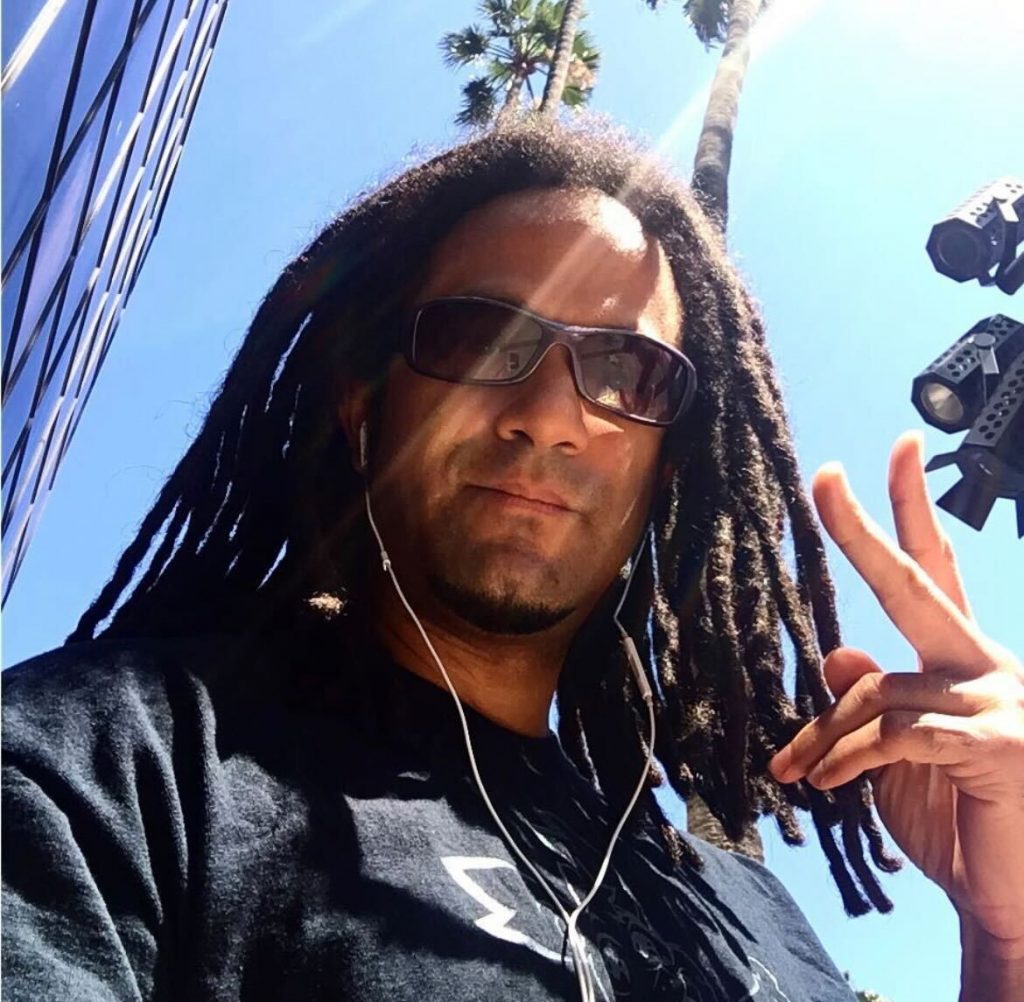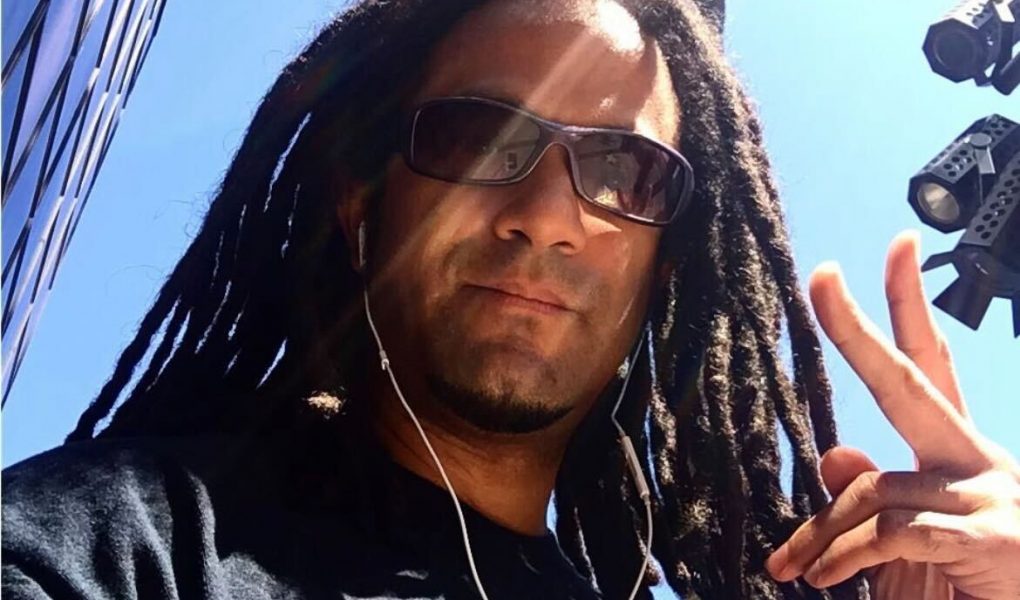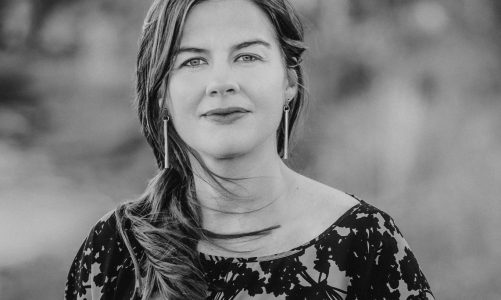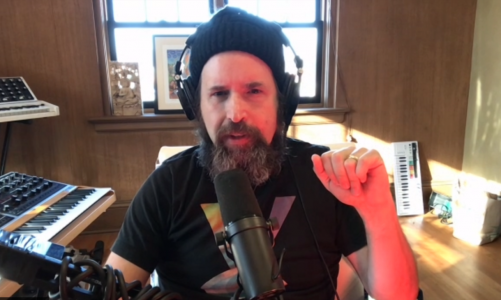
Felipe Smith is an American comic book artist and a manga writer. He is the author of Peepo Choo, one of the first manga series created by a foreigner. It was released in Japan by Kodansha, the largest Japanese publishing company, before it hit the market in English. He is also known for creating and co-designing Robbie Reyes Ghost Rider, a comic that is part of the Marvel Universe, his work on Nickelodeon’s Teenage Mutant Ninja Turtles and his semi-autobiographical graphic novel called MBQ.
Dana Toneva: You tend to write slice of life pieces that focus on our day-to-day activities and experiences. Can you tell me a little bit more about the experiences that have served as inspiration for your work?
Felipe Smith: I got to meet a lot of interesting characters. I had a couple of situations that were pretty crazy, which made me realize that sometimes fact is more amazing than fiction. I figured, “Hey, this stuff is crazy, I could write about this kind of stuff – not think about things that are supernatural or fantastic in any form, but rather, the things that people go through everyday.” That was around the time I discovered the broader genres of Japanese comics by walking into my first Japanese bookstore in Los Angeles. I saw that there were shelves full of books and series that would span over sixty volumes. They were about people living their life. There wasn’t really a very extreme kind of good versus evil theme, or any robots or ninjas. [Those things] were introduced to the Western world through anime very quickly. I realized that a big bulk of what’s being published has nothing to do with those genres. That solidified my move in that direction, for sure.
Do you base most of your characters on real people? What parts of your life did you choose to create the backstory of Robbie Reyes? Is there a lot of yourself in your work?
With Robbie Reyes, I wanted to make the story in LA because most Marvel Superheroes reside in New York or on [somewhere on] the East Coast. I figured that if I made it in LA, not only would I be able to kind of write about slice-of-life things, but I would also be able to write about local things. [For example,] the Mexican demographic is very big in Los Angeles, so I thought that would represent the city.
The first series I did, MBQ, had a lot of my own life. In fact, the main character, Mario, lived in my real apartment. All the rooms are real, the mess in those rooms was also real, and Mario’s roommate, Jeff, and his friend, Brian [were real]. When I went to Japan, it was the first time I was writing characters that were not based on anyone I knew.
I think that, as creators, we all put ourselves in our work. Sometimes, [we do that] very literally. There are some instances in which an author is not aware that they’re putting something about themselves in a character until later on. There’s definitely parts of me in the characters, some more than others. That is very hard to avoid for anybody creating art.
In an interview for Anime News Network, you noted that there are a lot of differences between what manga portrays and what Japanese life really is. Would you elaborate on this a little bit?
I had a really good situation in terms of learning Japanese culture and language because I worked part-time at a Japanese karaoke bar in West LA, in an area which now is called Little Osaka. I worked with people my age from Japan, some of whom were learning English. We would teach each other about our language and our culture. We talked about things like, “Well, in this situation, what would you guys do?”. This is a very intimate way to learn because these are people you work with, and you have to do daily tasks together. Sometimes they’d be studying for exams and they asked me about English vocabulary. When I answered, I’d ask them what it would be in Japanese and I would take notes.
By the time I went to Japan, I already had a good idea of how people behave socially, how they behave when they’re drinking, and letting loose. Japan puts a lot of importance on working hard, being efficient and doing things well, to your best capacity. That can be very stressful from day to day. When I saw situations where people weren’t particularly busy, it was important for them to look busy for the benefit of others, who are really, very busy. It became this thing where people had to maintain an exterior that showed something, and then the only time you could let those barriers down and say whatever you want without being held responsible for it, or chastised for it socially, is when you’re drinking, when you’re out.
I find this very funny because in karaoke bars, regular bars, nightclubs, you see people go through a transformation. They’ll show up looking a certain way and behaving a certain way, but by the time they’re out there, it’s a completely different thing. Those are the types of things I like to write about – human emotion and human interaction. When you’re working these part-time jobs, one of the main things you do is interact with people you don’t know. Getting to see that through their lenses, as I did with the Japanese students in the States, and hearing how they would comment on certain customers, how they would ask certain questions, really gave me a deeper perspective into how people see things in Japan even before I went.
My characters, because they were [first time] Americans who were going to Japan for the first time, wouldn’t have had enough information or experience with that culture to understand what those things were. So I had to kind of create simpler ones. [For example,] you take your shoes off when you go into someone’s home, right? In Japan, that’s just the standard thing, but in a lot of countries, it completely is not. In some countries, they might be considered rude. “How dare you take your shoes off in my house? This is not your house” or whatever the case may be.
You say that you felt confident, but at the same time, there are cultural differences. How did those differences play out when you were dealing with Kodansha and creating manga? Did you have any difficulties with style, or drawing, or voices, characters – anything in terms of creativity?
My style went through a transformation. One of the things my editor said was to make the women cuter. I thought, “Well, my women are always super hot. That’s one of the things I do,” and he said, “Yeah, but you’re approaching it from a Western perspective of beauty. Ours is slightly different. If you want to cater to our community, you have to understand what people find attractive here.” The first thing I was told was “We make the faces look younger. Make them look like kids.” They would explain to me: “You have Angelina Jolie as a face type, right? You guys consider in the Western world that this is an attractive woman. To us, that’s an American perception, that’s American taste. We like cute.” He started showing me different photos of pop idols and actresses that were popular. Then I understood that I had to make them look super young from my perspective as a Westerner. But then he was like, “A very young face, but a woman that’s very curvaceous, too.” I translated it to a kid face and an adult body, and then they laughed, because of the way I put it.
In Japan, there are so many different genres. If you look at comics here in the US, there’s house style, there’s a Marvel or DC style. Those things change with time. Things will change over time, but for the most part, there’s kind of a look to those types of comics. I wasn’t particularly fond of that. I’d gotten tired of that. That’s why manga became very attractive to me.
Creating art and manga can be very time consuming. How did you deal with this, with the numerous tight deadlines? What did your day look like?
Let’s say it was a monthly comic book and every month I had to produce between 40 and 60 pages. I was a beginning artist so I didn’t have royalties coming in from other volumes. Comic book artists live off of the royalties of their previously published volumes, so if it’s a popular series, every time they do a reprint, the author gets royalties from that. The longer the series, the more royalties are coming in. In my case, I didn’t have any volumes so I wasn’t making royalties yet. I paid for an assistant seven days out of the month. Once the story I had come up with was approved by my editor, the rough thumbnails were done. I would start drawing the pages and all the characters. The last seven days the assistant would help me with backgrounds. I would provide photos to use as reference for the backgrounds in each panel. We would tone it together.
I turned out to have about three days off a month. My schedule [as a young artist] would be: wake up, whatever time it is, go to the desk and draw until you can’t draw anymore. Then go to bed. I would do that, you know, for months on end and then have three days off where I would see my friends if they weren’t busy. One thing I realized while living in Tokyo is that everybody, regardless of whether you’re a doctor, a comic book artist, or a convenience store clerk, you’re working really late hours and long shifts. It’s hard to complain when you see everybody going through the same thing. So, I would have those three days off, decompress, see my friends, go out, drink, listen to people cry about what’s going on with them, cry about my stuff and then it was back to work. Ganbaranakya – “must try hard”. That’s a very Japanese thing.
I was getting to a point where the lifestyle of working was really impacting me, health-wise. So it’s probably good that the series finished when it did, at the third volume. A lot of us, because of work, end up having a sedentary lifestyle. That’s really horrible for you. When you’re a rookie creator, it’s about finding that balance and figuring out how quickly you can do your work, how long it takes you to get the story done.
Peepo Choo is such an exciting mix, because you have elements of violence, erotica, and autobiographical elements. Do you think that the fact that it’s a mixed genre makes it more difficult to stay creative? Do you feel like the genre and the audience matter a lot when you are figuring out the story?
My comics have the theme of cultural misconception between two countries that makes it such a mixed genre piece. For a Japanese reader, if he or she has not left Japan to go somewhere else, it might have been a little bit harder to get into.
One of my editors at Kodansha asked me, “What’s the deal with Peepo Choo? The characters are always changing, it always looks different.” I told him, “Well, that’s my work. It has a lot of different elements to it.” I want my audience to get used to the idea that things change, and there’s always going to be something new. There are readers who want the comfort of knowing that they’re always going to get the same thing. I think that as you read my work, you start realizing that all these storylines thread into one storyline.
What’s your favorite part of the process? Is it drawing, storyboarding, the combination of the two?
This has changed throughout time. When I was doing MBQ, my favorite part was being done with everything. I couldn’t wait for people to read it. When I was working in Japan, my favorite part was doing the drawings, because it meant that the story had been accepted and I didn’t have to think or stress out anymore. Drawing was mechanical work. I found it relaxing. The drawing part you can do while listening to music or talking to someone.
Considering that you are exploring different mediums for your stories such as animation, would you like to explore any other genres more in-depth as well?
Actually, one of the stories I pitched after Peepo Choo was kind of a romance story, but it was a combination of romance and action. I would like to do a “strict” genre, but I just feel like I would always have to do something within that genre to make it stand out – either aesthetically or through design. A Western or a boxing story would be cool.
Do you find yourself personally interested in something and then wanting to create another thing related to it?
Definitely. Sometimes I’ll see a conversation on the bus and I’m like, “That would be a good story.” Other times, it would be just an image, something I draw or a doodle and there would be something about that doodle. Since people haven’t been able to see others and to do the things they normally do, a lot of them have just taken to social media to let out everything that’s on their mind. That has definitely fueled a lot of story ideas. The interesting thing is that there is a lot of communication going on, [which leads to] a lot of miscommunication.
So, yes, I’ve been just designing characters, writing down story points and just trying to figure out what’s the best way to get it out there, to get to my audience. Is it the screen, is it the page? I’m kind of figuring that out.
*This interview has been edited for length and clarity.




